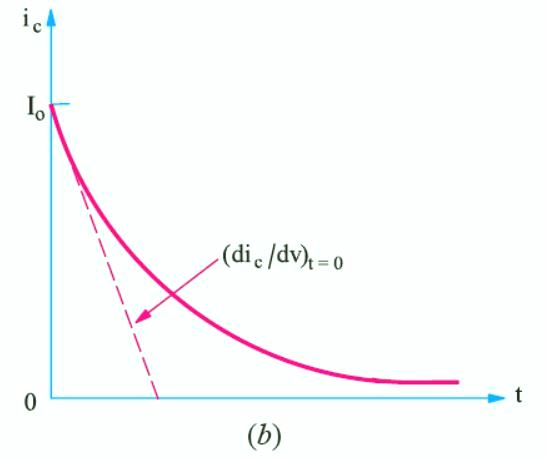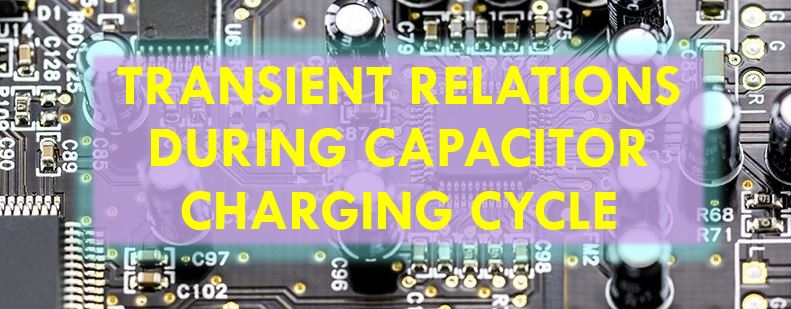Transient Relations During Capacitor Charging Cycle
Whenever a circuit goes from one steady-state condition to another steady-state condition, it passes through a transient state which is of short duration. The first steady-state condition is called the initial condition and the second steady-state condition is called the final condition. In fact, transient condition lies in between the initial and final conditions. For example, when switch S in the figure given below [Fig. (a)] is not connected either to a or b, the RC circuit is in its initial steady state with no current and hence no voltage drops. When S is shifted to point a, current starts flowing through R and hence, transient voltages are developed across R and C till they achieve their final steady values. The period during which current and voltage changes take place is called transient condition.

The moment switch S is shifted to point ‘a’ as shown in figure given below[Fig. (b)], a charging current ic is set up which starts charging C that is initially uncharged. At the beginning of the transient state, ic is maximum because there is no potential across C to oppose the applied voltage V. It has maximum value = V/R = I0. It produces maximum voltage drop across R = icR = I0R. Also, initially, vc = 0, but as time passes, ic decreases gradually so does vR but vc increases exponentially till it reaches the final steady value of V. Although V is constant, vR and vc are variable.
However, at any time V = vR + vc = icR + vc.
At the beginning of the transient state, ic = I0, vc = 0 but vR = V. At the end of the transient state, ic = 0 hence, vR = 0 but vc = V.
AdBlock-2

The initial rates of change of vc, vR and ic are given by

These are the initial rates of change. However, their rate of change at any time during the charging transient are given as under :

It is shown in figure given below [Fig. (c)].

It should be clearly understood that a negative rate of change means a decreasing rate of change. It does not mean that the concerned quantity has reversed its direction.
Read article – Units of Resistivity
Visit NCERTplanet.com for NCERT solutions and Textbook downloads




